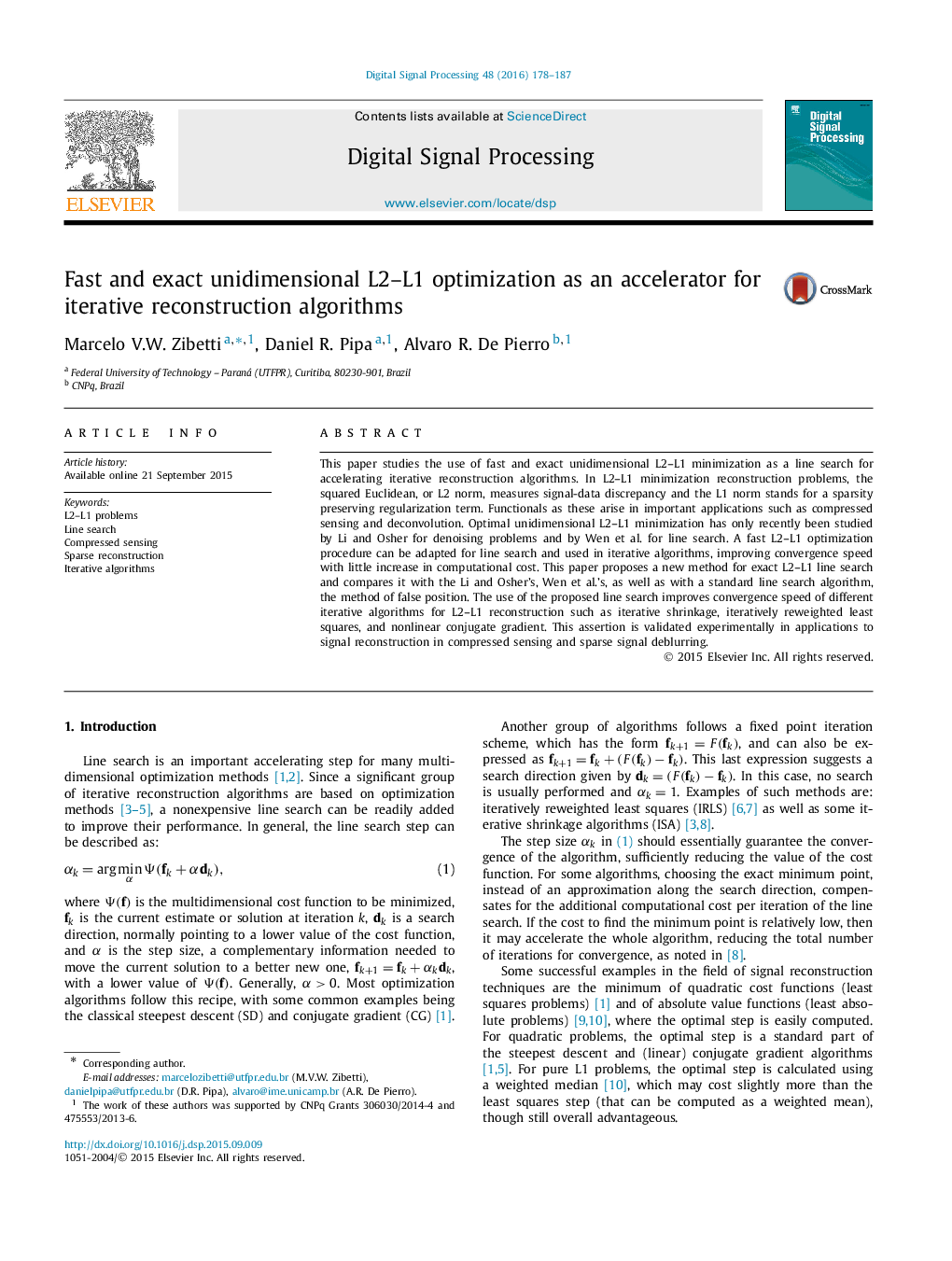| Article ID | Journal | Published Year | Pages | File Type |
|---|---|---|---|---|
| 6951995 | Digital Signal Processing | 2016 | 10 Pages |
Abstract
This paper studies the use of fast and exact unidimensional L2-L1 minimization as a line search for accelerating iterative reconstruction algorithms. In L2-L1 minimization reconstruction problems, the squared Euclidean, or L2 norm, measures signal-data discrepancy and the L1 norm stands for a sparsity preserving regularization term. Functionals as these arise in important applications such as compressed sensing and deconvolution. Optimal unidimensional L2-L1 minimization has only recently been studied by Li and Osher for denoising problems and by Wen et al. for line search. A fast L2-L1 optimization procedure can be adapted for line search and used in iterative algorithms, improving convergence speed with little increase in computational cost. This paper proposes a new method for exact L2-L1 line search and compares it with the Li and Osher's, Wen et al.'s, as well as with a standard line search algorithm, the method of false position. The use of the proposed line search improves convergence speed of different iterative algorithms for L2-L1 reconstruction such as iterative shrinkage, iteratively reweighted least squares, and nonlinear conjugate gradient. This assertion is validated experimentally in applications to signal reconstruction in compressed sensing and sparse signal deblurring.
Related Topics
Physical Sciences and Engineering
Computer Science
Signal Processing
Authors
Marcelo V.W. Zibetti, Daniel R. Pipa, Alvaro R. De Pierro,
